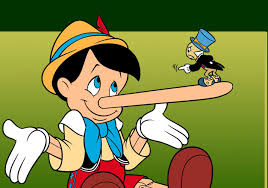06, 2014
Buyer Remorse and Enterprise Sales
Let’s look at two emotions that many customers, in both B2C or B2B sales, experience after a purchase – whether it’s new sport coat or a $1,000,000 enterprise software purchase.
Buyer Remorse
Consumers experiencing Buyer Remorse might ask themselves three types of questions types after a purchase:
- Emotional – How do I feel? Happy, relieved, angry, frustrated?
- Wisdom – Did I make the right purchasing decision? Is this the right product or service for me? Should I have made the purchase at all?
- Concern – Was I “sold”? Am I getting ripped off?
The 7 x 1 Framework for Customer Success helps the salesperson address, or altogether prevent, Buyer’s Remorse. By providing immediate reinforcement to the customer that their purchase immediately sets off a stream of events and activities, they can see their decision turn into into action. It’s positive reinforcement.
 I had someone ask me – “If your customer is experiencing Buyer’s Remorse, and you’re following 7 x 1, doesn’t that just remind them of their decision?”
I had someone ask me – “If your customer is experiencing Buyer’s Remorse, and you’re following 7 x 1, doesn’t that just remind them of their decision?”
My answer: If my new customer is feeling even a hint of Buyer’s Remorse, I want to know about it as soon as possible so I can address any outstanding needs.
- Maybe the customer isn’t altogether happy with the price or terms. Perhaps the contract negotiation felt too much like a negotiation…
- Maybe the customer is worried about successful integration and training…
- Maybe the customer has some doubt about achieving the stated 10x ROI, and they’ve put their backside on the line with their team, manager, IT department, and customers…
Customers must complete all of the steps of the sales process regardless of when they sign a contract and give you money. It’s unavoidable. This includes identifying and articulating their needs, evaluating all available options, resolving their concerns, and then implementing your solution. Now… Sometimes the customer will sign a contract and give you their money before the process is complete. They might be motivated for an acute reason. They might have an overzealous executive that unilaterally made a purchasing decision based on early discussions and references from their executive friends. Regardless, as a seller, you still need to complete the sales process with your customer. Using the 7 x 1 Framework, you can immediately begin to track my new customer’s behavior.
- Are they responding to emails and calls the first day?
- Did they accept a meeting invite to onboard their team leaders?
- Do they commit to an onsite visit in two weeks?
- Are they making introductions to team leaders with whom interaction is needed to assess KPIs?
If the customer isn’t reciprocating the communication and enthusiasm for their new purchase, I know I have a problem that needs to be fixed ASAP. I had a case just like this recently. We signed up a new client where contract process went very quickly and smoothly in the Fall. Then the holidays rolled around, and the communication between our teams slowed. By the end of January, it completely stopped. When I finally spoke to the CEO, I asked him – “What’s up?” Well… turned out that his management team and he had some reservations about the exit clauses and safeguards built into the contract, causing some cold feet during the implementation process.
In this case, it took nearly two months after we signed the contract to identify these concerns – much longer than I would have liked, and much sooner than I might have discovered without taking an active role in the implementation plan and monitoring progress on benchmarks we dually agreed to during the contract process. Using 7 x 1 and monitoring the implementation process enabled me to see that we were behind schedule and the customer’s behavior wasn’t consistent with our stated implementation plan.
Post-choice rationalization & Choice supportive bias
“Humans are not a rational animal, but a rationalizing one.” – Leon Festinger
Customers lie to us and themselves. They lie, lie, lie all of the time. They say things like:
- “While I’m not getting the 10x ROI I expected, we’re definitely seeing the benefits of switching the service.”
- “We had to switch vendors anyway. Our old vendor’s technology just couldn’t keep up with our needs.”
- “The new system is a little slower than expected, but my team really likes their UI.”
 Choice supportive bias is great for customer retention if you already have the business. Sort of. But ask yourself:
Choice supportive bias is great for customer retention if you already have the business. Sort of. But ask yourself:
- What are your customer rationalizing about your product?
- Are they living with marginal customer service?
- Do they accept that you can’t keep up with their needs?
But if you really, really care about the customer achieving what they aspire to achieve, you need to fight this complacency even if you have the business. Because there are people like me out there competing against you. And when I take your business, I’m not giving it back.
This behavior depresses me the most because, if you’re the new vendor, the customer won’t tell you about their disappointment. They’ll pay their bills, and keep you as a vendor – sometimes for years before they make a switch. And all the while, you’ve been living under the false pretense that you’re kicking ass and your customer is happy. When a competitors enters the picture in a year or two or three, you have no chance of keeping the business. Just by bringing in another vendor to review, you’ve lost the relationship (or you never really had it in the first place…)
I experienced this as a seller when I sold textbooks to universities. Publishing companies updated textbook editions every three years, so every year, you knew exactly when academic departments and professors would need to make a new purchasing decision. They would either need to move to the new edition of their current textbook, or this would be the time they would entertain a switch. Competing against an entrenched textbook, especially for big classes like General Chemistry or Principles of Economics was an absolute bear.
Three years ago, the department made a purchasing decision based on technology and increasing student learning (and course evaluation scores! 🙂 Three year later, I’d hear from professors – “Well, the such-and-such text isn’t great, but I’ve already built out my class notes and I haven’t had any students tell me that they absolutely hate it, so I think I’m just going to rollover to the next edition.” Ahhhhh!!!!
Nooooo!!! Wait. Our General Chemistry book is better because of this and this and that! And we have a website with our book! And we have live tutoring. And we include the lab manual as part of the package!
Working through 7 x 1 with your customer early in the relationship and throughout the relationship enables you to track with your customer’s KPIs and identifies opportunities where you can grow as your customer’s needs grow and change.
